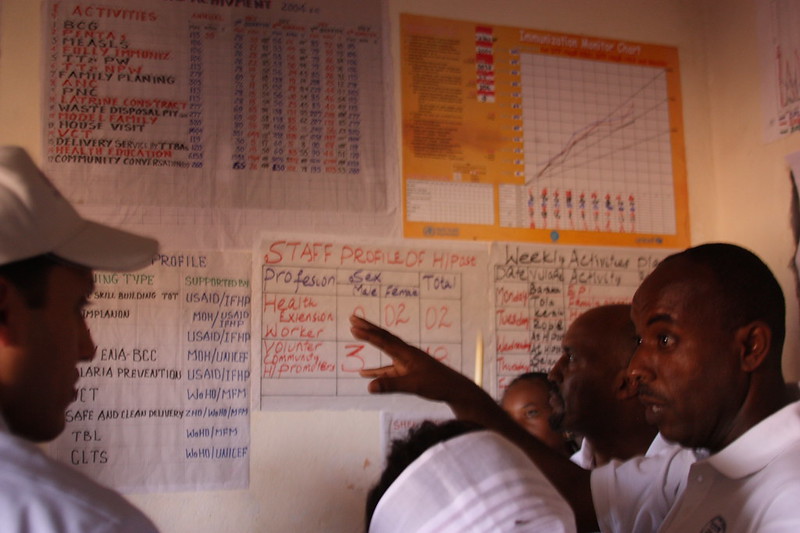In 2020, the global economy was hit by an unprecedented exogenous shock—an event that occurs outside the economic system but which has a great impact on it—in the form of the COVID-19 pandemic. The pandemic forced many countries across the globe to implement economic restrictions and lockdowns to minimize its spread. It posed a significant fiscal risk to many governments, as it was unforeseen and unavoidable. As some countries had already finalized their 2020 fiscal year budgets, governments had to pass in-year adjustments budgets, and in some cases supplementary budgets, to provide for COVID-19 fiscal response packages.
COVID-19 required the allocation of resources under extraordinary pressures. Despite global economies going into recession as a result of the pandemic, the demand for public services increased due to its countercyclical nature. This put pressure on public finances and governments had to implement fiscal measures to balance competing priorities with available resources. As global economies begin to recover amid the implementation of vaccination programs, it is important to reflect on our experience with the pandemic, in particular on how it has tested the resilience of public finances in order to better prepare for future crises.
Knowing what we know now about prolonged exogenous shocks such as COVID-19, how can governments use fiscal lessons from the pandemic to better prepare for future crises?
One of the big lessons from the pandemic has been about the importance of ensuring fiscal preparedness—maintaining a healthy state of public finances—to effectively respond to exogenous shocks or crises. COVID-19 found the fiscal positions of some governments across the world not to be in the best of shape as they were ridden by low tax revenue, high debt as a proportion of GDP, and widening deficits. This left these governments with limited fiscal space to respond to COVID-19, thus requiring increased borrowing to finance governments’ response to the pandemic, pushing their fiscal positions further into deficit. The pandemic therefore serves as a reminder of why a countercyclical approach to public finances is important as had these governments applied the right fiscal approach to suit the economic context, COVID-19 would have found the government coffers in a healthier state to be able to promptly respond to the pandemic.
Another big lesson from COVID-19 has been on the importance of investing in social infrastructure. While most governments had pronounced investment in capital spending to be a strategic priority pre-COVID, the pandemic has shown that in some cases, this was mere rhetoric given the poor state that the virus found the public health systems of most countries in. While COVID-19 was a health crisis, its magnitude and its multifaceted impact also demonstrated gaps in the provision of other social infrastructure such as water and sanitation in schools and inappropriate housing and living conditions for the poor. Accordingly, this sends a clear message to governments that they can no longer afford to neglect investment in social infrastructure, both in terms of new construction projects and the repair and maintenance of existing infrastructure. It is vital that projects intended to construct and/or maintain the upkeep of schools, hospitals, roads, housing, and so on, are prioritized as part of normal resource allocation processes as the pandemic has exposed the dangers of what happens when you slip up on this and wait for a crisis to strike.
Linked to the above, there is a need for governments to ensure that where the status of public finances necessitates increased borrowing, such borrowing should not be used to finance consumption expenditure but should be channeled to investment in capital. During the pandemic, it was particularly concerning to note that despite large deficits and public debt, the status of social infrastructure in some countries remained very poor. This further strengthens the need for a more rigorous approach to resource allocation for infrastructure. Beyond the allocation of resources, it is also extremely important for governments to invest in acquiring the right capacity both internally and externally (through contractors and consultants) for the management and implementation of infrastructure projects. The classic rationale for poor performance in regard to infrastructure projects being the result of the non-performance of contractors and consultants and/or the lack of skills within governments to manage these projects should not be condoned as valid excuses for the poor status of social infrastructure in the post-COVID era.
Lastly, another lesson from COVID-19 has been on the importance of prioritization of limited government resources. Beyond COVID-19, ministries of finance should work closely with other ministries to categorize government spending programmes into budget priorities to facilitate better resource allocation decisions during crises. What this categorization would entail is basically dividing spending programs into three areas: 1) the “must have/must do/can’t do without” would be those programs that are very critical for government and would require funding irrespective of whether there is a crisis or not as they represent governments’ core service delivery. Examples of these would be certain programs in health services, like the provision of basic healthcare which is a human right in some countries. A second category could represent spending programs that government can afford to do without, postpone to later, or even cancel altogether. These would be programs that government is implementing because they are nice to have but do not fulfil a constitutional mandate or service delivery obligation. The last category, which is really the buffer, could be a categorization of those spending programs that governments can spend money on if it has the money but if not, they are not important enough to be prioritized for spending. Doing this could facilitate better resource allocation decisions in times of crises as governments would know which programs it can redirect funds from to finance crises related spending.
Disclaimer
CGD blog posts reflect the views of the authors, drawing on prior research and experience in their areas of expertise. CGD is a nonpartisan, independent organization and does not take institutional positions.





